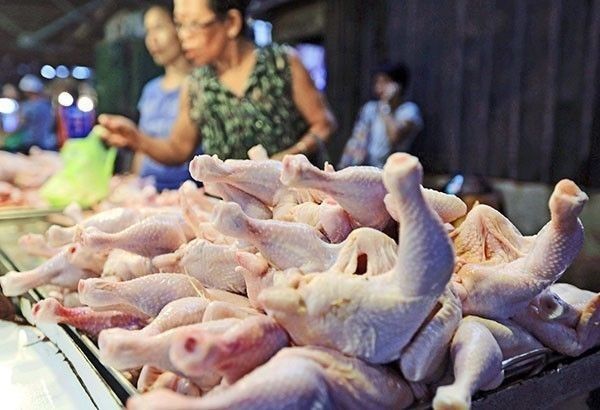DA warns overpricing traders amid P250/kilo of chicken

MANILA, Philippines — Traders involved in overpricing will be held liable for profiteering under the Price Act as the P250 per kilo price of chicken is “too much,” according to the Department of Agriculture.
The DA maintained that the prevailing price of chicken should range only between P200 and P210 per kilo.
Chicken in Muñoz Market in Quezon City was being sold for as high as P250 per kilo, or P40 more compared to the prevailing price, Agriculture Assistant Secretary and spokesman Arnel de Mesa said yesterday at a press conference.
“Somebody is really taking advantage. That’s why we will monitor this market,” De Mesa said.
The DA is coordinating with the local government to identify traders selling overpriced chickens.
“As Agriculture Secretary Francisco Tiu Laurel Jr. has said, we do not want to zero in on vendors as they are only on the receiving end. We need to determine the source as it is possible that the (overpricing) comes from the source, from the traders. We have to look at all possible angles,” he said.
The DA is not planning to impose a suggested retail price despite the spike in chickens’ retail prices, De Mesa noted.
The temporary ban on imported poultry products from Minnesota in the US amid the outbreak of bird flu has affected the farmgate price as the US is the main source of parent stocks, which produce day-old chicks, De Mesa said.
Tiu Laurel said the rapid spread of bird flu in the US necessitates a wider coverage of trade restrictions to prevent the entry of the highly pathogenic avian influenza H5N1 virus and protect the health of the local poultry population.
The Philippines has lifted the ban on imported poultry products from the Czech Republic.
De Mesa said that based on the United Broiler Raisers Association’s report, the recent El Niño also affected the Philippines’ chicken production.
Imported meat
The persisting elevated prices of locally produced meat products continue to make imported products more “competitive” and “attractive” to Filipino consumers, according to the Meat Importers and Traders Association (MITA).
The 10 percent increase in meat imports from January to May reflects the growing need of consumers for more affordable items and products, the group noted.
“The high price locally could be attributed to decreased production and higher cost due to the El Niño phenomenon,” MITA president emeritus Jesus Cham said in a statement.
Latest Bureau of Animal Industry data showed meat imports from January to May reached 524,675 metric tons, or about 46,347 MT higher than the 478,327 MT recorded volume in the same period last year.
- Latest
- Trending

























